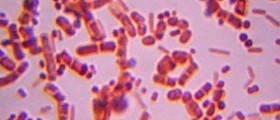
What is C. Difficile?
C. difficile is a certain type of bacterium which commonlylives in the intestines of human beings and it is also sometimes referred to asclostridium difficile. This bacterium may sometimes cause a lot of damage sinceit can be associated with the development of certain life threatening medicalconditions such as extreme inflammation and distention of the colon,inflammation of the large intestine, severe diarrhea and sepsis. For those whodo not know, sepsis is a certain severe type of infection which spreads bymeans of the bloodstream inside the human body. C. difficile is oftenassociated with previous antbiotic use in patients. This is mainly due to thefact that antibiotics are very efficient in getting rid of all the bad bacteriainside the human body, but since they cannot be selective they can also killoff the good bacteria and disturb their balance. Once this balance isdisturbed, C. difficile tend to flourish inside the human intestines, so theytrigger all the aforementioned medical problems. This harmful bacterium usuallyaffects the elderly population and all those who spend significant amounts oftime in healthcare institutions, nursing homes and hospitals. C. difficile isalso known for commonly affecting all those who suffer from compromised immunesystems. Healthy people usually do not get affected by C. difficile infectionthat easily. The same can be said for all those who are without antimicrobialexposure.
Statistical Data
The number of people affected by C. difficile in the UnitedStates is growing rapidly on a regular daily basis. This bacterium is actuallythe most common cause of all cases of diarrhea associated to the use ofantibiotics or infectious healthcare. There are approximately 20 percent ofhospitalized patients who suffer from diarrhea induced by antibiotics. In thelast couple of years, the number of hospital discharges with C. difficileinfections has more than doubled, according to some scientific researches. Itis also very interesting to point out that the average length of the patients’stay at hospitals due to C. difficile infections is almost three times higherthan before. There are more than half a million cases of C. difficile infectionin the United States each year, and out of those there are more than 28,000 caseswhich end in death. According to some other professional studies, theprevalence rate for C. difficile infection is more than 13 cases per 1,000inpatients which is a terrifying fact since it stands for at least 13 timeshigher than all previous estimates. Over the recent years there is also asignificant increase in the severity of the disease which now affects elderly,adults and children as well. The stay in healthcare facilities is nowapproximately 5 days longer than before. The costs for inpatient care have alsoincreased significantly as they are now approximately 4,000 dollars per episodemore than before. The annual costs for C. difficile infections in the UnitedStates are way above one billion dollars. Another big problem with C. difficileinfections is the fact that recent years have brought certain strains of thesetypes of infections which are much more antibiotic and virulent resistant. These strains are mainly characterized by anability of producing significantly larger amounts of toxins than before. Theyare able to infect a completely healthy person and they are commonly associatedwith a large number of treatment failures, colectomies and deaths.
What Are the Symptoms of CDI?
C. difficile infection can easily be characterized bycertain common types of symptoms such as abdominal cramping, abdominaltenderness, abdominal pain, nausea, loss of appetire, fever and waterydiarrhea. In order to resolve the symptoms one needs to use oral types ofantibiotics known as vancomycin and metronidazole. These medicaments are veryefficient in killing the active form of the bacterium.
How Is CDI Spread?
The C. difficile bacterium can be found in the feces and allother contaminated surfaces, materials and areas which came into contact withthe contaminated feces. The infection occurs due to certain toxic productsproduced by the bacteria. This bacterium has two forms – the vegetative and thespore form. Spores can survive outside the human body for months and they canget into the host’s body simply by means of a touch. Oral ingestion of C.difficile spores leads to the development of infection mainly due to the factthat they are resistant to the acidity of the human stomach. Once they getthere, the spores germinate into the vegetative form of the bacterium.
Risk Factors for CDI
There are numerous different types of risk factors which maycontribute to the development of C. difficile infection but the most commonones include advanced age, hospitalization and exposure to various differenttypes of antimicrobials. The antimicrobial classes which are commonlyassociated with the development of C. difficile infection includefluoroquinolones, clindamycin and cephalosporins.

















Your thoughts on this
Loading...